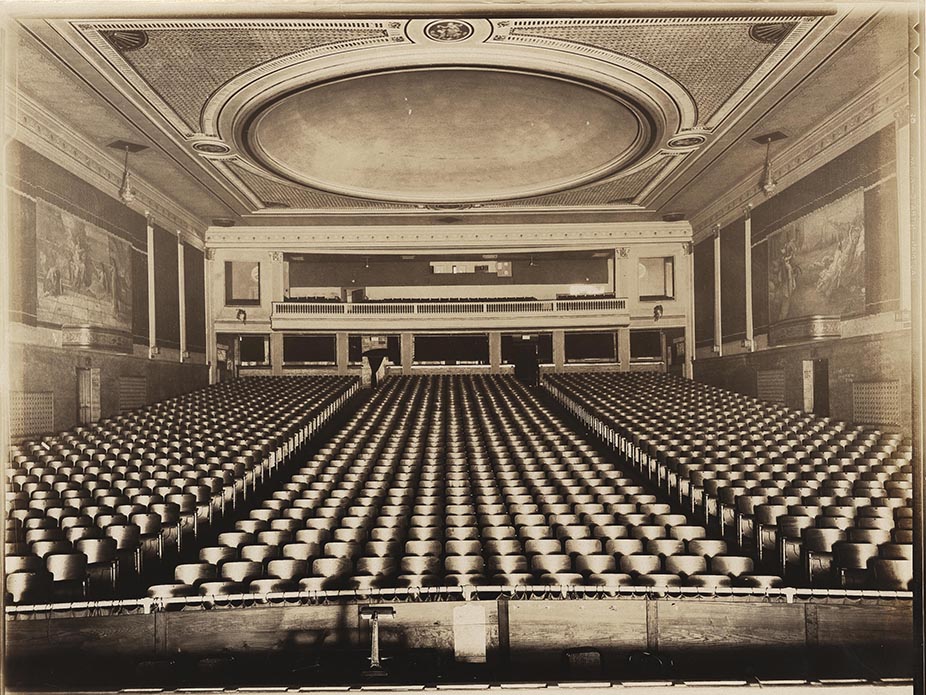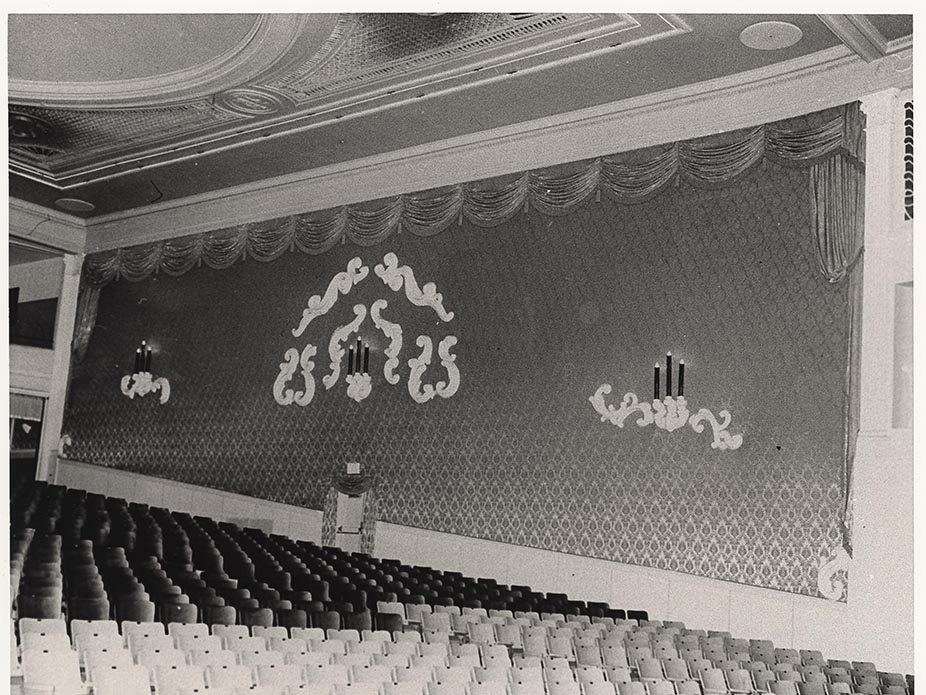History
The Gloria Theater opened at 331 King Street in 1927 as a showcase for vaudeville, touring shows and movies. Built by Albert Sottile’s Pastime Amusement Company, the Gloria was designed as a smaller version of the great movie palaces of the era and was lauded for the grandeur of its architecture and design. Originally fitted with nearly 2,000 seats, the Gloria was the largest of its kind in South Carolina and was the third theater opened in Charleston by the Pastime Amusement Company. It was followed by 11 more in and around the King Street area between 1925 and 1931. Today, the former Gloria Theater is the only one of these many movie houses that still functions as a performing arts space.
Theater Design
The Gloria was designed by C.K. Howell of Richmond, who designed a great many theaters in the southeast, including the Empire, the Lyric and the National Theaters in Richmond, VA; the Academy of Music in Lynchburg, VA; the Jefferson in Charlottesville, VA; the Rylander in Americus, GA; the Imperial in Augusta, GA; and of particular interest to us, the Lucas Theater in Savannah, GA, which has many similar design elements to the Gloria.
Little is known about the artists responsible for the various decorative elements in the Gloria. Even the original wall murals were left uncredited, other than a reference to Italian artisans in an early article announcing the opening of the theater. Ornamental and decorative painting is credited to a Charles A. Hottinger of New York, who also decorated the interior of the Capitol Theater in Lancaster, PA.
The wall paintings, classical in concept were done by Italian artists from New York, who executed their work on canvas here. One depicts the Centaur and nymphs, with an attractive landscape background and the other suggests music and drama. On either side of these canvases are in ornamental panels. And even the exits are pleasing to the eye for they are under large garden cabinets in which the foliage blends most fittingly with the scenery of the paintings. The general color effect of the interiors is featured by gold and buff but with other subdued shades that harmonize. "Gloria Theater admired by throngs at opening performances Saturday." from The Charleston Evening Post (August 20, 1927)
Opening, Closing
From opening night on August 19, 1927, when audiences were entertained by the silent film After Midnight starring Norma Shearer, the Gloria Theater served primarily as a movie house. The South Carolina premiere of Gone with the Wind was held at the Gloria, with members of the original cast in attendance, including Charleston native Alicia Rhett (India Wilkes in the film). In the 1950's, the advent of television and the new multiplexes cropping up off the peninsula led to an overall decline in downtown theater attendance. A brief resurgence in the mid-1960’s, brought on by the release of the wildly popular Sound of Music, brought back audiences in numbers not seen since Gone with the Wind. This uptick in ticket sales sparked one final floor-to-ceiling renovation spearheaded by then president of Pastime Amusement Company, Mrs. J.C. Long. Unfortunately, it was a short-lived boom and, not long after, the Gloria Theater closed its doors for good in 1975. Shortly thereafter the building was purchased by the College of Charleston.
Reopening and Reinvigoration
Initially, the theater was used as a storage space and spent many years in disuse while the College considered various renovation options, including a negotiation with the City about turning it into an opera house for use by the fledgling Spoleto Festival USA. When this did not come to fruition, the College turned to addressing the most urgently needed repairs and updates, including the preservation of the theater's illuminated blue dome and twinkling stars. The addition of a modern heating and air conditioning system, an expansion of the stage, and a rear addition that included much needed dressing rooms, a green room, and storage space were also included in the College's first renovation. When the theater’s doors opened again in February 1990, it was as the newly named Sottile Theatre - in honor of Albert Sottile.
As the College of Charleston continued improvements to the Sottile Theatre in 2011, two large-scale murals were discovered hiding beneath acoustic tiles. Painted on canvas during the theatre's construction in the 1920's, one scene depicts a centaur and nymphs before a forested and mountainous background. The other shows classical figures celebrating music and drama before a blue-green sea. While the south mural had to be temporarily removed due to severe damage, the north mural was left uncovered; its blemishes, damage and deterioration were left on display to the Theatre’s patrons. Much of the restoration work would involve remediation of the many spots of tar used to attach the acoustic tiles to the murals decades ago.
The most recent, large-scale renovation project was completed in 2020 and included significant updates to the stage house, restoration/preservation of the murals and the illuminated dome, and repairs to the decorative plaster work surrounding.


